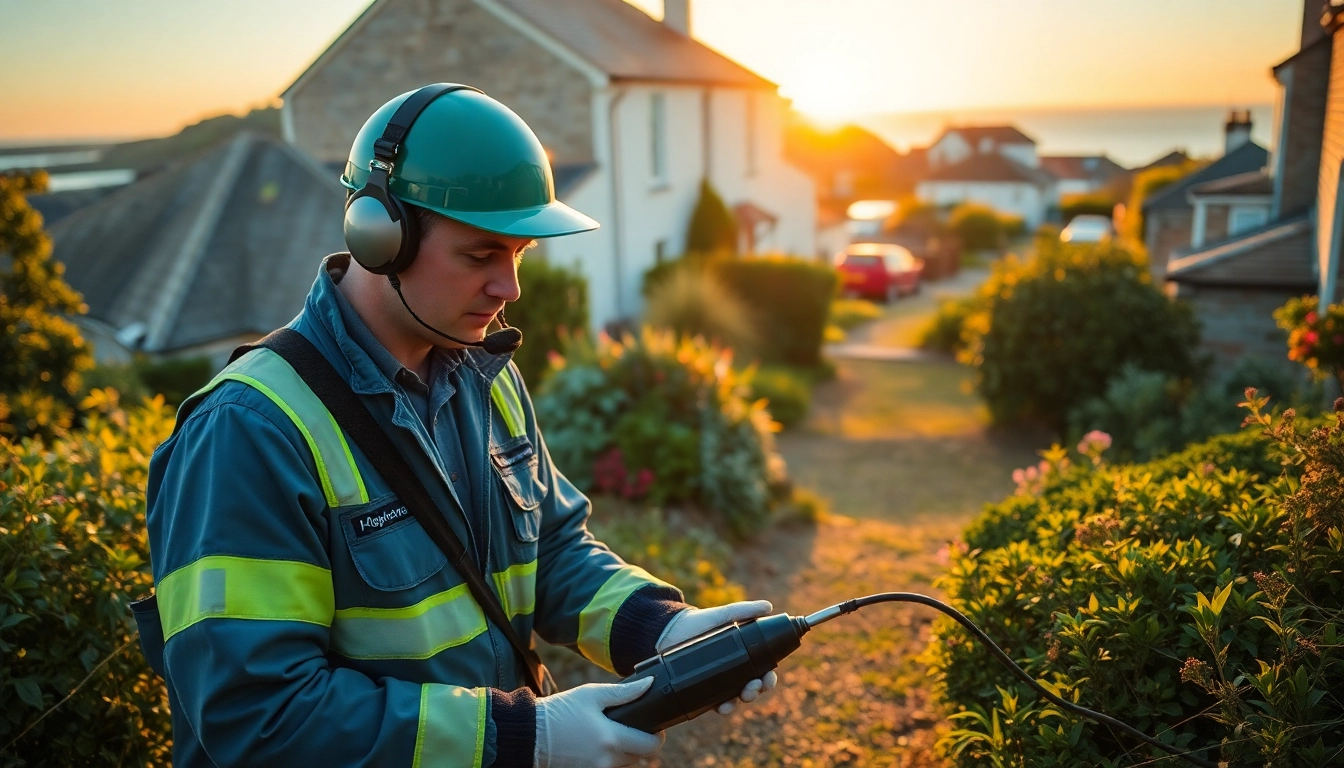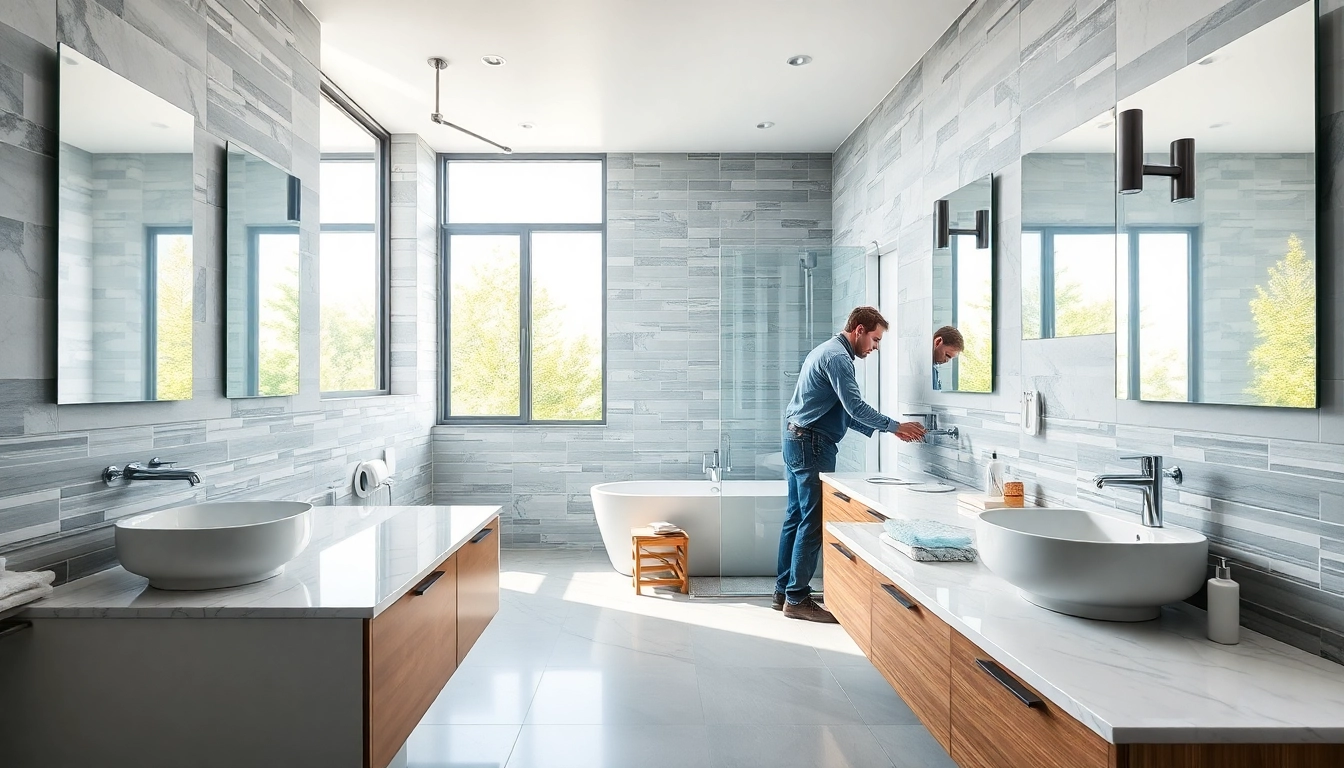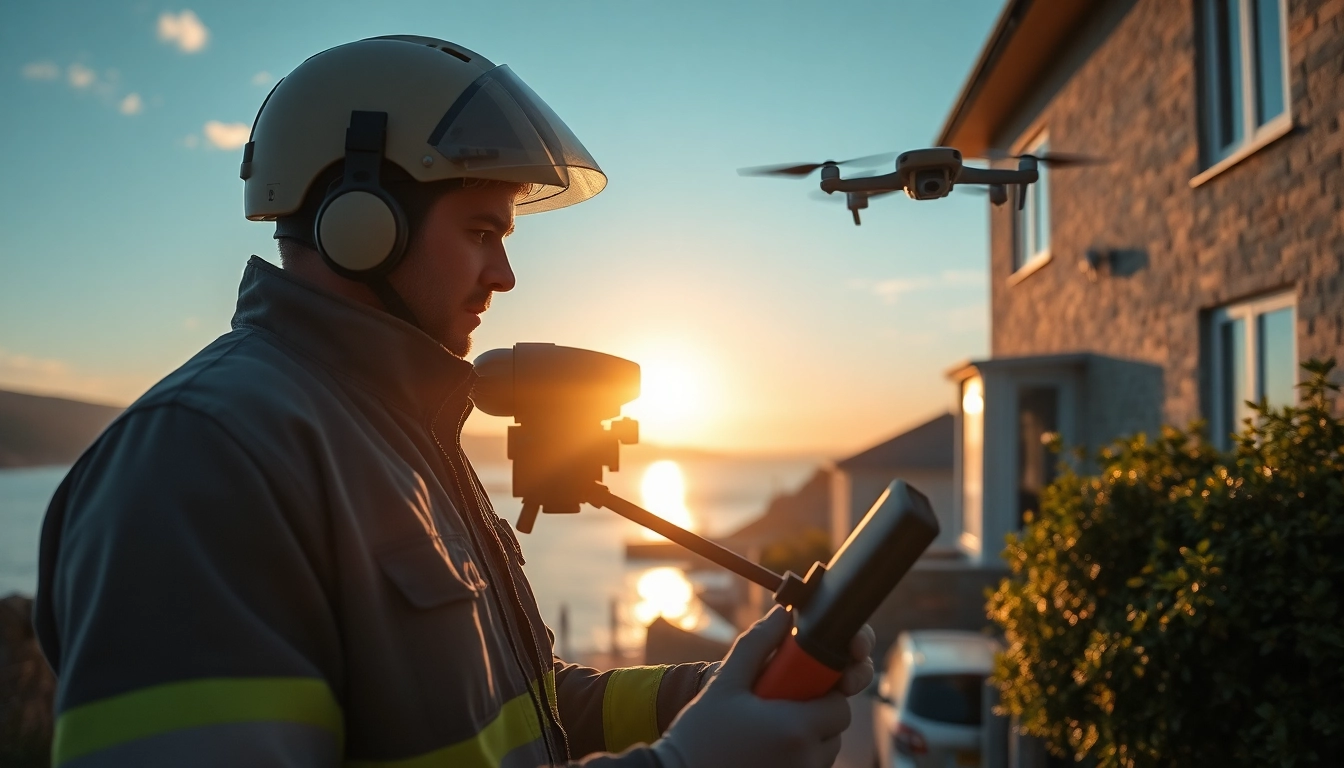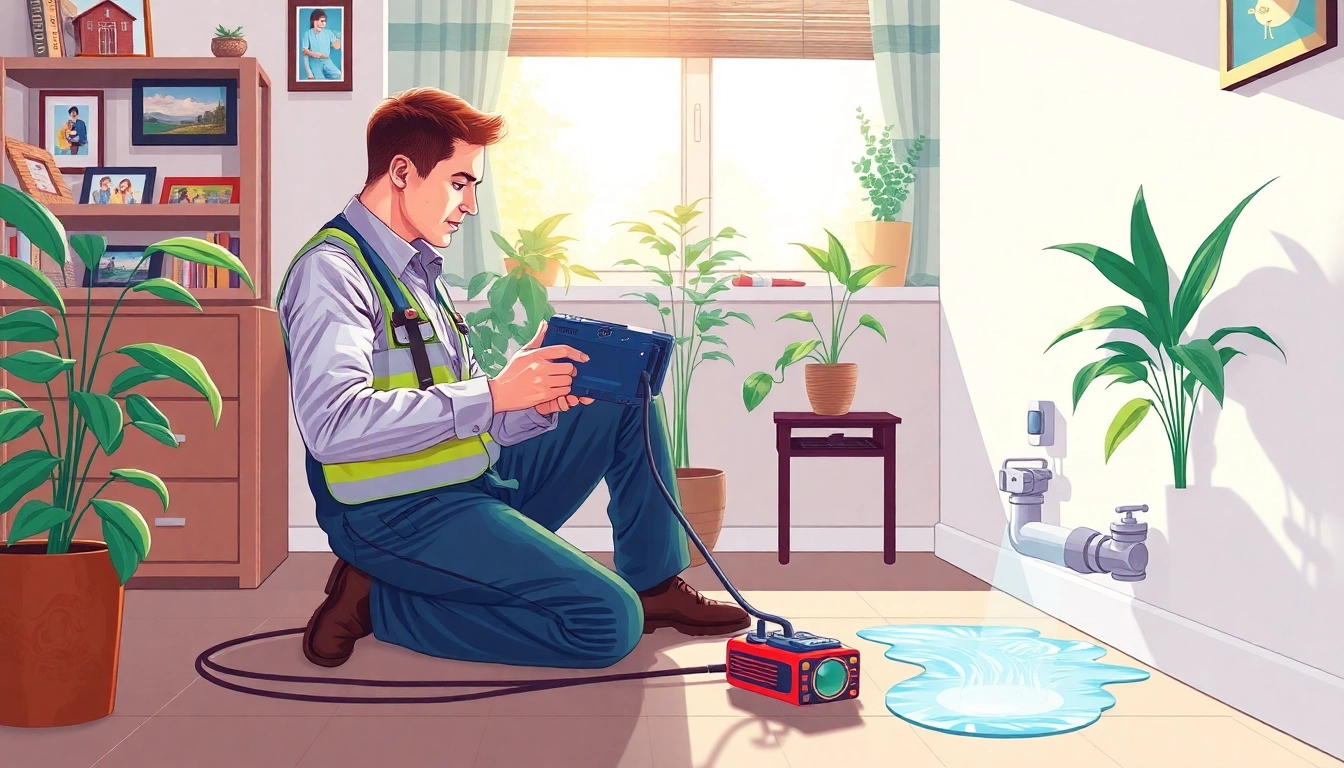Understanding Leak Detection Cornwall
Water leaks can be a homeowner’s worst nightmare, leading to extensive damage, high utility bills, and potential health hazards. Leak Detection Cornwall offers a vital solution to this pervasive problem. Understanding the importance of leak detection, the signs to look for, and how to address leaks will empower homeowners to maintain the integrity of their properties effectively.
What is Leak Detection?
Leak detection refers to a range of techniques and technologies utilized to identify and locate leaks in various systems, most prominently in plumbing and drainage systems. The primary goal is to discern concealed leaks before they escalate into major issues. This process often employs advanced tools and methodologies to minimize invasive inspections and provide accurate results efficiently.
Why is It Important for Homeowners?
For homeowners, timely leak detection is crucial for multiple reasons:
- Prevention of Damage: Water leaks can cause structural damage, promote mold growth, and compromise the integrity of foundational elements.
- Cost Savings: Detecting leaks early can significantly reduce water bills, as even minor leaks can waste substantial amounts of water over time.
- Health Concerns: Mold and damp conditions resulting from unseen leaks can lead to health issues, including respiratory problems.
- Peace of Mind: Knowing that your home is leak-free provides peace of mind, allowing homeowners to focus on other essential aspects of property maintenance.
Common Signs of Water Leaks
Being able to identify the early signs of a water leak can save homeowners a significant amount of stress and money. Here are some common indicators:
- Unexplained Water Bills: A sudden spike in water bills can indicate a leak somewhere in your plumbing system.
- Wet Spots on Walls or Ceilings: Visible dampness on surfaces can point to a leak behind the walls or in the ceiling.
- Mold or Mildew: The presence of mold or mildew can often suggest a persistent moisture problem that could result from a leak.
- Strange Sounds: Gurgling, hissing, or dripping sounds may indicate leaks that require investigation.
Advanced Leak Detection Techniques
In the pursuit of accurate and efficient leak detection, various advanced techniques have emerged, offering modern solutions to traditional problems.
Non-Destructive Testing Methods
Non-destructive testing (NDT) methods are particularly advantageous for leak detection as they do not damage the structure during the examination. Techniques include:
- Acoustic Leak Detection: This method uses microphones and sensors to detect the sound of water escaping from a pipe, helping to identify the exact location of a leak.
- Electromagnetic Methods: These techniques evaluate the conductivity of materials to locate pipes and assess the potential for leaks.
- Infrared Thermography: Infrared cameras can detect temperature differences in materials, allowing for the identification of leaks hidden beneath walls or floors.
Thermal Imaging and Acoustic Technology
Combining thermal imaging with acoustic technology enhances leak detection accuracy. Thermal imaging can identify temperature variations that indicate moisture presence. Meanwhile, acoustic detection helps confirm the leaks through sound analysis. The careful integration of these technologies leads to:
- The precise location of leaks, reducing repair costs.
- Minimized disruption to the property, as non-invasive methods limit damage during inspection.
- Faster detection times, allowing for prompt repairs and reduced risk of property damage.
The Role of Equipment in Leak Detection Cornwall
Modern leak detection relies heavily on sophisticated equipment that enhances accuracy and efficiency. Key instruments include:
- Ultrasonic Leak Detectors: These devices can detect high frequencies emitted by pressurized gas leaks, often undetectable by the human ear.
- Moisture Meters: Used to assess moisture levels in walls and flooring, helping to pinpoint areas affected by leaks.
- Video Inspection Equipment: Cameras can be inserted into plumbing systems to provide visual confirmation of leaks, offering a real-time view of the problem.
Utilizing advanced leak detection technologies increases the accuracy of identifying hidden leaks while minimizing the need for invasive exploratory work.
Choosing the Right Leak Detection Service
Choosing an effective leak detection service is essential for achieving the best results. As the market is filled with options, understanding key factors can help facilitate this decision.
Key Qualities to Look For
When evaluating potential leak detection services, consider the following qualities:
- Experience: Companies with a strong track record in leak detection often boast a depth of knowledge informing their practices.
- Technology Capabilities: The use of modern equipment signifies a company’s commitment to accuracy and efficiency.
- Service Flexibility: Services that offer various methods tailored to different situations often provide more comprehensive solutions.
- Transparent Pricing: Clear information regarding estimates and costs helps prevent unexpected expenses.
Understanding Service Guarantees
Service guarantees can reflect a company’s confidence in their capabilities. Look for:
- No Find, No Fee Policies: This arrangement ensures that homeowners are only charged if a leak is found, enhancing trust in the service.
- Warranty on Work Done: Guarantees that cover the repairs after detection help protect homeowners against potential issues arising post-service.
How to Get Accurate Quotes
To obtain accurate quotes from leak detection services, homeowners should:
- Provide Detailed Information: Sharing specifics about the problem area allows professionals to give more precise estimates.
- Request a Site Visit: Many companies can provide more accurate quotes after assessing the property in person.
- Compare Multiple Quotes: Getting estimates from multiple providers can help identify average market rates and validate the value offered by specific services.
DIY vs. Professional Leak Detection
While DIY leak detection methods can serve in simple cases, professional services are often essential for complex issues. Understanding the differences can guide homeowners toward the best solution for their situation.
Common DIY Methods for Identifying Leaks
Homeowners can attempt several DIY methods for initial leak detection, such as:
- Visual Inspection: Check for water stains and dampness in visible areas.
- Water Meter Test: This method involves monitoring water usage to detect abnormal spikes.
- Food Coloring Experiment: Adding food coloring to toilets can reveal leaks if it seeps into the bowl.
When to Call a Professional in Cornwall
While DIY methods can identify evident leaks, certain circumstances warrant a call to professionals:
- When you cannot locate the source of a leak despite visible signs.
- If the leak involves underground or concealed pipes, where access is limited.
- In cases of significant water damage, where immediate and professional intervention is crucial.
Assessing Cost-Benefit Analysis
Homeowners need to weigh the costs associated with DIY solutions against professional services. While initial DIY attempts may seem cheaper, the potential for increased damage from missed leaks can lead to costly repairs later. Consideration of the long-term benefits of hiring professionals often outweighs short-term savings.
Maintaining Your Home Post-Leak Detection
Once leaks are detected and addressed, continued maintenance is vital for preventing future issues. Homeowners should engage in regular follow-up practices to ensure long-term protection of their properties.
Repair Options and Recommendations
The manner of repairs depends on several factors, including the leak’s size and location. Common repair options include:
- Pipe Replacement: Major leaks may necessitate replacing significant sections of plumbing.
- Sealants: In some cases, sealants can provide a temporary fix until permanent repairs can be conducted.
- Professional Repairs: Engaging with plumbers or leak detection specialists ensures a professional handling of repairs, ultimately safeguarding the integrity of your home.
Preventative Measures for Future Issues
To mitigate the risk of future leaks, homeowners can implement preventative measures, including:
- Regular Inspections: Schedule routine checks of plumbing systems, especially in areas prone to leaks.
- Pipe Insulation: Insulate pipes to mitigate the risks of bursts during colder months.
- Water Pressure Monitoring: Excessive water pressure can stress plumbing, increasing the likelihood of leaks.
The Importance of Regular Inspections
Regular inspections form a preventive strategy that allows for the early detection of leaks and minimizes the risk of damage to property. Engaging with professionals for periodic evaluations ensures that early signs of leaks are caught and addressed before they lead to significant issues.



